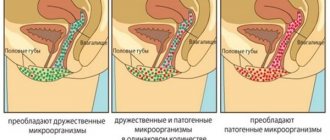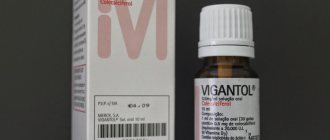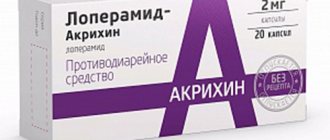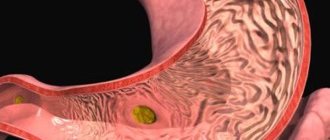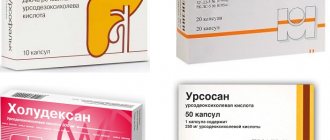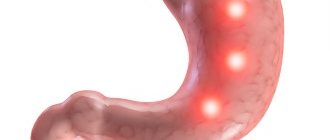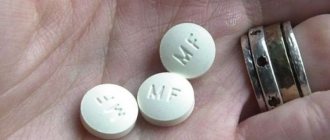Instructions
The medicine box contains an insert with important information, which contains data on indications, drug interactions, method of use, and price range.
This data must be carefully studied so that no unpleasant consequences arise in the future.
pharmachologic effect
The action of Urdoxa is aimed at protecting the liver from harmful factors (exogenous and endogenous). The medication has hepatoprotective, immunomodulatory and choleretic properties. When small gallstones form, the drug promotes their dissolution (partial or complete). Additionally, Urdoxa affects cholesterol and glucose levels, normalizing their levels.
The mechanism of action of the drug is due to the ability of the active components to integrate into the membranes of liver cells and stabilize their structure.
Pharmacological properties:
increased secretion of the glands of the pancreas and stomach;- stabilization of hepatocyte membranes;
- dissolution of small gallstones;
- normalization of sugar levels;
- increasing the protective functions of the liver;
- stimulation of exocytosis;
- accelerating the process of fat breakdown;
- reduction in the production of harmful bile acids;
- stabilization of cholesterol levels;
- restoration of the process of bile outflow;
- stimulation of cellular immunity;
- reducing the tendency of bile to form stones;
- increased pancreatic secretion;
- increased level of lipase activity.
Indications
The drug Urdoxa can be prescribed in the presence of conditions such as:
- Biliary cirrhosis (symptomatic treatment is carried out);
- Small as well as medium cholesterol stones;
- Biliary reflux gastritis,
- Cholangitis, steatohepatitis, fibrosis;
- Hepatitis of any form;
- Alcoholic liver disease.
Method of treatment
Capsules should be taken orally, without chewing or crushing. They should be swallowed whole with water.
| Application | Dosage |
| treatment of biliary reflux gastritis | prescribed in a dosage of 250 mg. Only a doctor can adjust the duration of treatment, as well as the dosage. When making this decision, he relies on the severity of the disease, as well as the patient’s reaction. |
| for dissolving stones | the dosage should be 250-500 mg, i.e. 1-2 capsules. Treatment should last from 90 to 360 days. For maintenance therapy, the dosage should be no more than 1 capsule once a day. |
| treatment of biliary cirrhosis | The dosage should be determined according to the person's weight. The maximum permissible dosage per day can be 6 capsules. |
Determination of dosage based on patient weight:
- If a person weighs up to 50 kg, then the dosage should be no more than two capsules;
- If a person’s weight is up to 65 kilograms, then the dosage of the drug should be three capsules;
- If a person weighs up to 85 kg, then the dosage of the medicine should be 4 capsules;
- If a person’s weight is less than 110 kg, then the number of capsules should not exceed 5 pieces;
- If a person weighs more than 110 kg, then the dose should be 6 capsules.
If a person’s weight is less than 34 kg, then such patients are prescribed the medicine in the form of a suspension.
Release form
This product can be produced in the form of capsules and suspensions. The capsule contains ursodeoxycholic acid, as well as magnesium stearate, corn starch, colloidal silicon dioxide. The shell contains titanium dioxide and gelatin.
Drug interactions
The patient should notify their doctor if they are taking any medications.
Colestipol, cholestyramine, as well as antacids containing smectin and aluminum hydroxide, reduce the effectiveness of Ursodex in the intestines. If taking medications containing at least one of these substances is necessary, then they should be taken 2 hours before starting to take Urdox.
The active substance may enhance the absorption of cyclosporine from the intestine. This is why patients taking cyclosporine should regularly check their cyclosporine concentrations and adjust their dosage if necessary.
Features of application
In the treatment of chronic pancreatitis, ursosan is prescribed as part of complex drug therapy. The duration of its use is determined by the doctor individually for each patient, taking into account the indications and results of instrumental and laboratory tests.
Ursosan is produced by the Czech company PRO.MED.CS in the form of capsules, each of which contains 250 mg of ursodeoxycholic acid. Capsules are packaged in blisters of 10 pieces and in cardboard boxes. One package can contain 1, 5 or 10 blisters.
Capsules are taken whole orally with a small amount of water during or after meals.
The dosage of Ursosan is determined by the doctor individually:
- Disorders of the functions of the bile ducts of the hyperkinetic type - 10 mg/kg in 2 doses for 2 weeks to 2 months;
- For cystic fibrosis, biliary cirrhosis, primary sclerosing cholangitis - 12-15 mg/kg (sometimes the dose is increased to 20-30 mg/kg) in 2-3 doses over six months or several years;
- After removal of the gallbladder - 250 mg 2 times a day for several months;
- For reflux esophagitis or biliary reflux - 250 mg per day before bedtime for 2 weeks to six months or more;
- For cholelithiasis - 10-15 mg/kg before bedtime for 6-12 months or more (until the stones are completely dissolved), after which the drug is taken for several more months to prevent the re-formation of stones;
- For chronic hepatitis, alcoholic liver disease, chronic viral hepatitis, non-alcoholic fatty disease - 10-15 mg/kg in 2-3 doses for 6-12 or more months.
With long-term use of urososan (more than 1 month), it is recommended that in the first 3 months of using the drug, a biochemical blood test is performed every month to determine the activity of liver transaminases. During long-term treatment, control ultrasounds of the gallbladder and biliary tract are required every 6 months.
Side effects
As a result of taking the drug Urdox, the patient may experience side effects, which are expressed in such conditions as:
- Nausea, diarrhea, calcification of stones, vomiting, abdominal pain, decompensation of liver cirrhosis;
- Hives, angioedema, redness, cough, runny nose, swelling;
- Psoriasis, alopecia.
These manifestations disappear immediately after discontinuation of the drug.
Overdose
No episodes of severe consequences of Urdoxa overdose have been recorded in medical practice. Uncontrolled use or regularly exceeding dosages increases the risk of adverse symptoms. In addition to allergic reactions, pain and diarrhea, doctors note the occurrence of alopecia. In psoriasis, an overdose can provoke an exacerbation of the pathology.
Other consequences of overdose:
- decompensation of liver cirrhosis;
- calcification of gallstones;
- yellowness of the skin;
- increased activity of liver enzymes.
Contraindications
Urdoxa is not recommended for the treatment of conditions such as:
Liver cirrhosis, which is at the stage of decompensation;- Lesions of the bile ducts, gallbladder, and intestines, which are in the acute stage;
- Improper or nonfunctioning liver;
- Gallstones with high calcium content;
- Allergy to components included in the product.
This medicine is not recommended for use in childhood. In addition, it is also not recommended to prescribe the medicine for severe liver/kidney damage.
Pregnancy
A pregnant girl can take this drug, however, she must always be under the supervision of a doctor.
These requirements can be explained by the need for constant monitoring of the girl and her child.
While breastfeeding the baby, the girl should stop taking Urdoxa. If it is not possible to stop the medicine, then the doctor must decide on transferring the baby from breastfeeding to artificial nutrition.
Analogues of the drug
In pharmacies you can buy analogues of ursosan, the active component of which is ursodeoxycholic acid. If your doctor has prescribed you to take Ursosan, be sure to agree with him on the possible replacement of this drug with its analogue.
Analogs of Ursosan are:
- Ursofalk;
- Urdoxa;
- Ursoliv;
- Urso 100;
- Ursohol;
- Ursor S;
- Ursorom Rompharm;
- Ursodex;
- Ursodez;
- Livodex;
- Exhol;
- Ursodeoxycholic acid;
- Choludexan.
Source: pancreatitu.net
special instructions
Impact on the ability to drive vehicles and operate machinery
Urdoxa does not reduce concentration and does not affect the speed of psychomotor reactions. The drug is absorbed in the intestines. Effects on the nervous system with this mechanism of action are excluded.
Pregnancy and lactation
Urdoxa is not suitable for the treatment of liver pathologies and dysfunction of the biliary system during the lactation period and pregnancy.
Use in childhood
Prescribing Urdoxa to children is prohibited. The drug has age restrictions (the corresponding mark is indicated in the instructions).
For impaired renal function
Serious kidney dysfunction is grounds for prohibiting the use of Urdoxa.
In case of liver dysfunction
Decompensated cirrhosis and severe liver pathologies are included in the list of contraindications.
Conditions for dispensing from pharmacies
Requires a prescription.
The effect of ursosan on pancreatitis
This drug contains the active ingredient ursodeoxycholic acid. This substance has high polar properties and is capable of forming non-toxic compounds (mixed micelles) with toxic bile acids. This property of ursodeoxycholic acid allows it to protect the cell membranes of hepatocytes. In addition, this active component of ursosan can be incorporated into cell membranes, stabilize hepatocytes and protect against the toxic effects of toxic bile acids.
Ursosan is a hepatoprotector and has the following properties:
- Protects liver cells from the effects of various unfavorable factors - the toxic effects of alcohol, toxic substances, certain medications and adverse environmental factors;
- Choleretic - promotes increased secretion of bile and its active movement into the intestines;
- Hypolipidemic – reduces the level of lipids in body tissues and blood;
- Hypocholesterolemic – reduces the level of “bad” cholesterol in bile and blood;
- Cholelytic – dissolves gallstones and prevents their formation;
- Immunomodulatory – increases the immunity of hepatocytes, normalizes the activity of lymphocytes, reduces the risk of developing varicose veins in the esophageal veins, inhibits the development of fibrosis in alcoholic steatohepatitis, cystic fibrosis and primary biliary cirrhosis.
The most common causes of pancreatitis are pathologies of the biliary system, liver disease and alcoholism. They lead to the development of biliary or alcoholic pancreatitis, which are chronic and periodically worsen. Another cause of the development of chronic pancreatitis can be cholelithiasis - in 25-90% of cases it can provoke inflammation of the pancreas.
All of the above cases may be a reason to prescribe Ursosan for pathologies of the pancreas, since the course of these diseases leads to exacerbations of chronic pancreatitis and requires treatment of pathologies and dysfunctions of the liver and biliary tract. In addition to this drug, the doctor may prescribe other hepatoprotectors to eliminate pathologies of the biliary system. That is why it is not recommended to take Ursosan without a doctor’s prescription, since only a specialist can correctly select the hepatoprotective agent you need.
Reviews
People, as a rule, leave only positive reviews about this medicine. This is due to the high effectiveness of the drug. In addition, people like the large list of analogues, which allows them to choose an affordable drug.
Among the negative aspects, people note the high cost of the medicine, as well as the presence of side effects, which for some were severe, which caused a lot of unpleasant sensations.
You can also find reviews from pregnant girls on the forums. They note an improvement in their condition within a few hours after taking the drug. There were no negative effects on the fetus.
Interaction with other drugs
- When taking ursodeoxycholic acid and antacids containing aluminum or ion-forming resins simultaneously, the effectiveness of the drug may decrease (let's take antacids and ursosan with an interval of 2-2.5 hours);
- When taking ursodeoxycholic acid and neomycin, estrogens, progestins and lipid-lowering drugs simultaneously, the ability of the drug to dissolve cholesterol stones may decrease;
- When ursodeoxycholic acid is taken simultaneously with cyclosporine, the absorption of the latter increases and a dosage adjustment of cyclosporine may be necessary.
